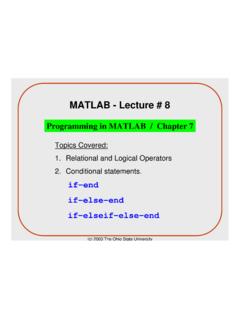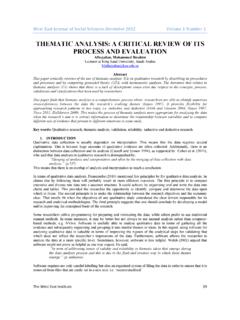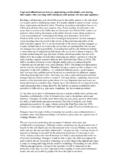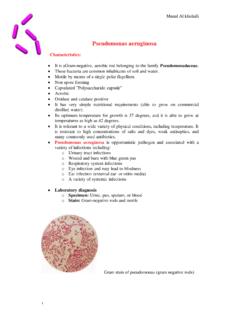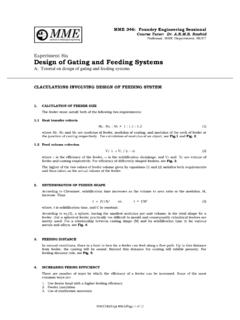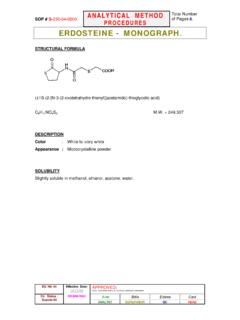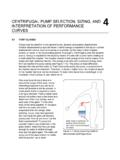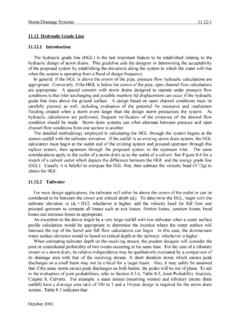Transcription of Electrical Submersible Pumping (ESP) Systems
1 Electrical Submersible Pumping (ESP) Systems By Matthew Amao Sunday, March 09, 2014 Artificial Lift Methods and Surface Operations PGE 482 1 Lecture Outline Components and Operating Mechanism Downhole Equipment Surface Equipment Gas Separators Installation Design Class Examples Operational Notes Summary Sunday, March 09, 2014 Artificial Lift Methods and Surface Operations PGE 482 2 3 Overview of ESP ESP Service Providers Schlumberger-REDA Centrilift Baker Hughes Weatherford Wood Group ESP ALNAS (Russia) Sunday, March 09, 2014 Artificial Lift Methods and Surface Operations PGE 482 4 5 ESP system ESP system can be divided into surface components and downhole components.
2 These components are listed below; Surface Components: Transformers Motor controller Switchboard of Variable Speed Drive (VSD) or Soft Start Junction Box Cable Venting box Wellhead Downhole Components: Cable Cable Guard Cable Clamps Pumps Gas Separator Seal Section Motor Sensor- Data Acquisition Instrumentation Drain Valve Check Valve Downhole Centrifugal Pump Centrifugal pump is so named because the head added to fluid is due largely to centrifugal effects Characterized by: Small diameter Large quantity of stages High design loads Pump Stage Fluid enters impeller through eye near shaft and exits impeller on outer diameter (OD) Diffuser (in blue) redirects fluid into next impeller Pump Impeller Impeller in Diffuser = A Pump Stage Mixed Flow Stage Radial Flow Stage Cut-away view of two impellers and diffusers By stacking impellers and diffusers (multi-staging), desired lift (TDH-Total Dynamic Head)
3 Is achieved Pump Stage Used in applications where free gas causes interference with pump performance Units separate some of free gas from fluid stream entering pump to improve pump s performance Homogenizer Separators Protects motor from contamination by well fluid Absorbs thrust from pump Equalizes pressure between wellbore and motor Seal Section Submersible Motor Motor is filled with oil It is a two-pole, three phase, 3,600 rpm (revolutions per minute) design Motor components are designed to withstand up to 500oF temperatures Sunday, March 09, 2014 Artificial Lift Methods and Surface Operations PGE 482 14 Downhole Components Sensor can also be added to the pump below the motor to acquire data like downhole pressure, temperature, and vibration, these supply pump monitoring data.
4 Cable Pump Intake Seal Section Motor Electric Power Cable There are different types of cables available in the industry. These include; Round Cables Flat Cables Number of conductors also varies from 1,2,4 on company Cables also vary depending on the type of insulation based on the working environment, there are special cable insulation for corrosive fluids and severe environments. Sunday, March 09, 2014 Artificial Lift Methods and Surface Operations PGE 482 16 Parts of a Pump s Electrical Cable 17 Surface Equipment: Transformer Power and control Skids The transformer is a device that transforms the voltage of an Electrical system .
5 For example a transformer that converts 7200 volts to 480 volts. This is accomplished by two sets of coils wrapped around an iron core in the transformer. In this case the transformation ratio is 7200/480. Transformers are rated in KVA capacity. This depends on the voltage and the current the transformer can handle. KVA = KV * A KV = Voltage in Kilovolts A= Current in Amperes Sunday, March 09, 2014 Artificial Lift Methods and Surface Operations PGE 482 18 Surface Equipment: Motor Controllers Motor Controllers; Fixed Speed Controller Variable Speed Controller Sunday, March 09, 2014 Artificial Lift Methods and Surface Operations PGE 482 19 EQUIPMENT SIZING AND DESIGN Sunday, March 09, 2014 Artificial Lift Methods and Surface Operations PGE 482 20 ESP Design Wells with Low GOR and High Water Cut Wells with High GOR Wells Producing Viscous Fluids Variable Speed Design ESP Design Considerations Sunday, March 09.
6 2014 Artificial Lift Methods and Surface Operations PGE 482 21 Design Guidelines Steps Based Design STEP Design Task Description 1 Basic Data Collect and analyze all well data to be used 2 Well Production Capacity Determine the production capacity and depth 3 Fluid Volume Calculations Calculate all fluid volumes at pump intake pressure 4 Total Dynamic Head (TDH) Determine the pump s discharge requirements 5 Pump Type Select pump that has highest efficiency based on desired flow rate 6 Optimum Size of Components Select optimal size of pump, motor, seal section and check the limitations if any 7 Electric Cable Select correct type and size of cable based on well 8 Accessory and Optional Equipment Select motor controller, transformer, tubing head and other optional equipment 9 Variable Speed Pumping system For additional operational flexibility.
7 Select the variable speed Submersible Pumping system Sunday, March 09, 2014 Artificial Lift Methods and Surface Operations PGE 482 22 STEP 1: Basic Data The first step in an ESP design is to collect and verify the reliability of all data that will be used in the design. The following is a listing of the data required. Well Data: Casing size and weight, Tubing size, type and thread, Perforated or open hole, Pump setting depth (measured and vertical), Deviation survey Production Data: Wellhead casing pressure, Wellhead tubing pressure, Present production rate, Production fluid level/Pump intake pressure, Static fluid level/ Static Bottom hole pressure, Datum point, Bottom-hole temperature, Desired production rate, Gas-oil ration, Water cut.
8 Well Fluid Conditions: Specific gravity of water, Oil API or specific gravity, Specific gravity of gas, Bubble-point pressure of gas, Viscosity of oil, PVT data. Power Sources: Available primary voltage, Frequency, Power source capabilities Possible Problems: Sand, Deposition, Corrosion, Paraffin, Emulsion, Gas, Temperature Sunday, March 09, 2014 Artificial Lift Methods and Surface Operations PGE 482 23 STEP 2: Well Production Capacity The Inflow Performance Relationship (IPR) or the Productivity Index (PI) of the well depending on the pressure regime should be integrated with the Vertical Lift Performance (VLP) Curve to determine the productive capacity of the well which would be used in the ESP design.
9 Sunday, March 09, 2014 Artificial Lift Methods and Surface Operations PGE 482 24 STEP 3: Fluid Volumes Calculation The accurate calculation of fluid volumes and type at the pump intake is very important in pump design. The presence and volume of free gas at the pump intake must be taken into consideration. The presence of free gas may considerably decrease the required discharge pressure, hence there may be a need to use a gas separator at the pump intake to achieve maximum system efficiency. Ideally, if the gas remains in solution, the pump behaves normally, however as gas to liquid ratio increases beyond the critical value of between 10-15%, the pump efficiency decreases and lower pump head is produced.
10 Hence, the percent free gas must be calculated so that the right gas separator technique/device can be chosen and integrated in the ESP design. Artificial Lift Methods and Surface Operations PGE 482 25 STEP 3: Fluid Volumes Calculation-B The free gas volume is calculate from the following equations/correlations, if PVT values are not available. Gas Oil Ratio (Dissolved Gas Oil Ratio) Using Standing s correlation (any suitable correlation can be used); = 18 Where, = Specific gas gravity = Bubble Point pressure (psi) T = Bottom-hole Temperature OF b.

